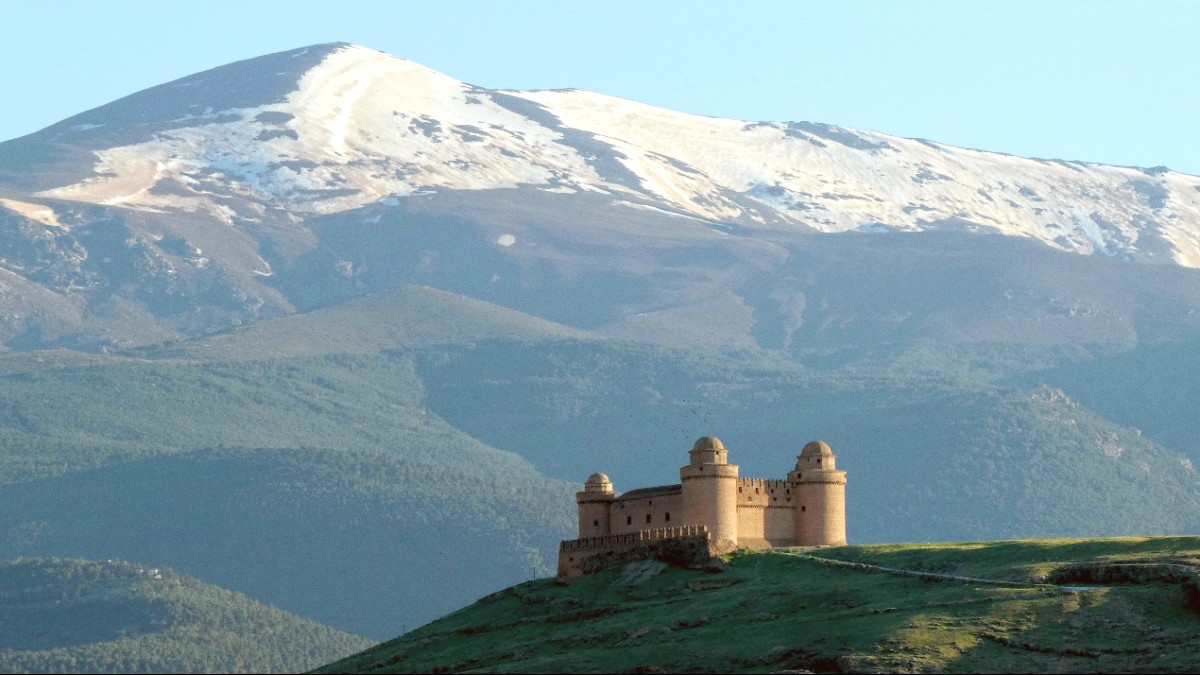
Spain
Winter (December to April) brings cold temperatures and heavy snowfall, making it ideal for winter sports. Average temperatures in Pradollano, the main resort village, range from -5°C to 5°C (23°F to 41°F). Higher peaks experience significantly colder conditions, often dropping well below freezing. Snowfall is common and often heavy, especially from January to March, creating a deep snowpack. Humidity is moderate, but the cold may feel intense with wind chill. Clear, sunny days are frequent, but sudden blizzards and whiteout conditions can occur, especially at higher elevations.
Spring (May to June) sees temperatures begin to climb, typically ranging from 5°C to 15°C (41°F to 59°F) at resort level. Higher peaks may retain snow well into June, for late-season skiing and early-season mountaineering. Precipitation decreases significantly compared to winter. The air feels fresh, and clear skies are common, making this a pleasant time for outdoor activities as the mountains shed their Winter coat. Autumn (September to November) cools, ranging from 5°C to 15°C (41°F to 59°F). Precipitation remains low through September and October, increasing towards late autumn. The landscape transforms with beautiful autumn colors, notably in the lower valleys. The first snowfalls often occur in late November, heralding the ski season. This is a quiet and reflective time for a visit, suitable for hiking and natural beauty.
Mountain weather changes quickly, even in summer. Always carry layers, waterproof clothing, and check forecasts frequently. High winds and whiteouts can occur during winter storms, impacting visibility and lift operations.
Thunderstorms can develop rapidly in summer afternoons, bringing lightning and heavy rain; seek shelter promptly if one approaches.
Spain is a member of the Schengen Area, with entry requirements adhering to common European standards.
Citizens of countries outside the EU/EEA/Switzerland generally need a Schengen visa for stays up to 90 days within any 180-day period. This visa permits travel throughout the Schengen Area. Apply for this visa at the Spanish embassy or consulate in your country of residence before your trip. The application process calls for various documents, including a valid passport, proof of purpose of travel, accommodation, sufficient funds, and travel insurance.
Many countries, including the United States, Canada, Australia, New Zealand, the United Kingdom, and many South American nations, do not need a visa for tourist stays up to 90 days within a 180-day period. This exemption applies to tourism, business, or short visits. ETIAS (European Travel Information and Authorisation System) will be needed by visa-exempt travelers, expected in mid-2025. This is a pre-travel authorization.
The Sierra Nevada National Park protects its natural environment with specific rules. General access for hiking is free, but certain activities may have permits from park authorities. Backcountry camping is highly regulated and usually needs a permit. No specific permits are needed for general hiking routes. However, some advanced mountaineering or climbing routes may call for registration or a certified guide, especially for technical climbs or winter ascents.
As of late 2023 and early 2024, Spain does not have specific health-related entry requirements for international travelers. This includes no mandatory vaccination certificates or testing. Travelers should still consult their own country's health advisories and their doctor before travel for personal health recommendations.
Permits for specific activities
Free access to marked trails.
Usually needs a permit, limited availability.
Technical climbs may have conditions
No specific permit for general hiking routes.
May need registration or certified guide.
General health advice
No mandatory vaccination or testing currently.
Consult your doctor for personalized advice.
Costs vary widely based on your travel style and the season. High season (mid-December to April for winter, July to August for summer) brings higher prices for accommodation, lift passes, and rentals due to increased crowds. Shoulder seasons (May-June, September-November) give lower prices and fewer crowds. Low season (November, early December, late April) has the lowest prices but limited services.
Spain uses the Euro (€). ATMs are widely available in Granada and Pradollano. Credit and debit cards (Visa, Mastercard) are commonly accepted. Inform your bank of travel to avoid card blocking. Currency exchange offices are present in major cities but offer less favorable rates compared to ATM withdrawals.
Hostel, supermarket meals, public transport, free activities.
Comfortable hotel, frequent restaurant meals, bus, ski passes, guided tours.
Luxury hotel, fine dining, private transfers, extensive activities.
€40-€60 (seasonal variation).
~€5-€6 one way.
The region is generally safe, but understanding specific considerations for a mountain environment is important.
Pradollano, the main ski resort, sits at 2,100 meters (6,890 feet). Higher peaks like Mulhacén reach over 3,000 meters (9,800 feet). Symptoms can include headache, nausea, dizziness, and fatigue. High altitude also means increased exposure to harmful UV radiation, especially with snow reflection.
Skiing, snowboarding, and hiking inherently carry risks. Spain boasts a high-quality public healthcare system. EU citizens should bring their European Health Insurance Card (EHIC). Non-EU citizens need travel insurance covering medical emergencies.
The Sierra Nevada resort area and National Park have very low crime rates. You can feel secure enjoying the outdoors. Standard precautions are wise: secure your valuables, especially in crowded areas like the ski resort base, lift queues, or bus stations. Granada city, while generally safe, can have issues with pickpocketing in tourist-heavy areas.